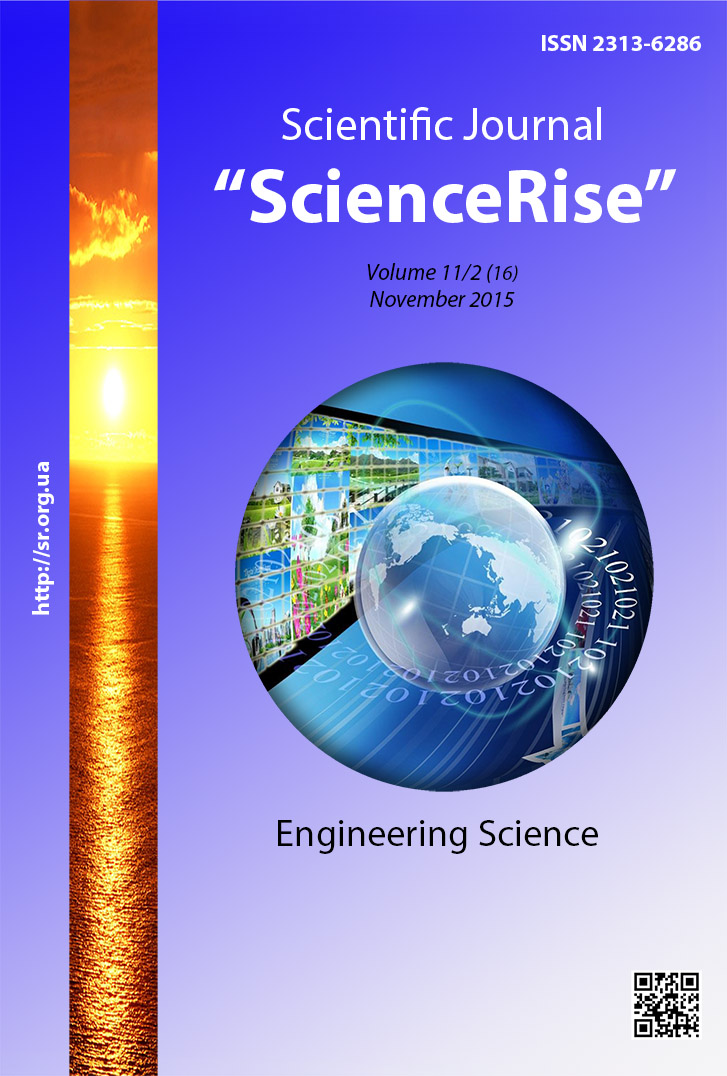Influence of polymer-silicate filler and polystyrene on the process of gelation and properties of poly(vinyl chloride) plastic
DOI:
https://doi.org/10.15587/2313-8416.2015.54095Keywords:
poly(vinyl) chloride, polymer-silicate filler, modification, gelation, polystyrene, polyvinyl alcohol, rheologyAbstract
The features of obtaining and modifying Ba,Zn-containing polymer-silicate fillers have been investigated. The influence of the polystyrene modifiers (suspension and shockproof polystyrene) and finely dispersed Ba,Zn-containing polymer-silicate fillers on the process of gelation, look of flow curves, rheological properties: index of flow, flow limit, thermal stability, surface hardness and the elasticity of the plasticized poly(vinyl) chloride have been discovered
References
Patrick, S. G. (2005). Practical guide to Polyvinyl chloride. UK: Rapra technology limited, 162.
Burgess, R. H. (1986). Manufacture of processing of PVC. UK: Elsevier applied science publishers ltd, 206.
Garcia, J., Marcilla, A. (1998). Rheological study of the influence of the plasticizer concentration in the gelation and fusion processes of PVC plastisols. Polymer, 39 (15), 3507–3514. doi: 10.1016/s0032-3861(97)10033-7
Rabinovitch, E. B., Summers, J. W. (1980). Poly (vinyl chloride) processing morphology. Journal of Vinyl and Additive Technology, 2 (3), 165–168. doi: 10.1002/vnl.730020307
Summers, J. W. (1981). The nature of poly (vinyl chloride) crystallinity—the microdomain structure. Journal of Vinyl and Additive Technology, 3 (2), 107–110. doi: 10.1002/vnl.730030204
Ulianov, V. M. (1992). Polyvinilhlorid. Moscow: Khimija, 288.
Masyuk, A. S., Levytskyi, V. Ye. (2014). Regularities of obtaining of polymer-silicate composites from water-soluble silicates and polymers. Eastern-European Journal of Enterprise Technologies, 6/6(72), 29–33. doi: 10.15587/1729-4061.2014.30870
Chukin, G. D. (2008). Surface chemistry and structure of the dispersed silica, 172.
Klimov, D. M., Petrov, A. G., Georgiivsky, D. V. (2005). Visco-plastic flow. Dynamic chaos, resistance, mixing, 394.
Reddy, J. E., Hackett, J. A., Ford, J. I. (2002). Trends and challenges in liquid mixed metal stabilizers. Vinyltec 2002. Compounding polyvinyl chloride in the 21st century. Proceedings of a conference held Itasca, 231–253.
Downloads
Published
Issue
Section
License
Copyright (c) 2015 Андрій Сергійович Масюк, Юрій Валерійович Ларук, Володимир Євстахович Левицький

This work is licensed under a Creative Commons Attribution 4.0 International License.
Our journal abides by the Creative Commons CC BY copyright rights and permissions for open access journals.
Authors, who are published in this journal, agree to the following conditions:
1. The authors reserve the right to authorship of the work and pass the first publication right of this work to the journal under the terms of a Creative Commons CC BY, which allows others to freely distribute the published research with the obligatory reference to the authors of the original work and the first publication of the work in this journal.
2. The authors have the right to conclude separate supplement agreements that relate to non-exclusive work distribution in the form in which it has been published by the journal (for example, to upload the work to the online storage of the journal or publish it as part of a monograph), provided that the reference to the first publication of the work in this journal is included.

